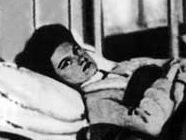In the early 1900s Mary Mallon, a woman of Irish descent working in New York as a cook, was infected with typhoid. Although Mallon displayed no symptoms herself, she reportedly infected 51 other people, three of whom died. She was dubbed ‘Typhoid Mary’ and held in detention for nearly thirty years. Besides what happened to Mallon herself, the ‘Typhoid Mary’ stereotype was widely used to vilify Irish immigrants as dirty and disease ridden. There are worrying signs that the same kind of stereotyping and scapegoating is now happening with Coronavirus in place of typhoid.
Recently a Singaporean student named Jack Monk was attacked in Oxford Street by a group of men, one of whom was heard saying “I don’t want your Coronavirus in my country”. Jack has been living in the UK for two years and he comes from a country which has handled the pandemic better than Britain. Of course that didn’t stop these xenophobes from treating him as yellow peril.
Natalia Molonia, professor of History and American Studies at the University of Southern California, is not surprised by the rise in xenophobia in recent weeks. “We’ve always used race as an organising principle to define problems,” she warns, observing that Asian American students at her own campus are given certain looks and are more likely to be seen as disease carriers. Xenophobia has been a theme in pandemics throughout history, she concludes. San Francisco officials blamed the Chinese for an outbreak of the Bubonic plague in 1900, and Italian Immigrants were blamed for a polio outbreak in 1916.
Hopefully, most of us have moved on from these knee-jerk reactions but the next few weeks will be a test of how far we have come.




